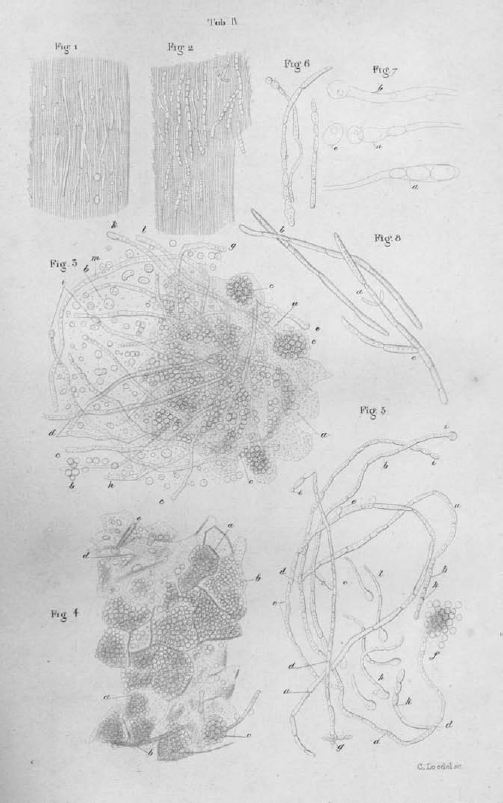
Some 200 fungal species are known to be pathogenic for humans, distressing millions of people. From the times of Greek and Roman antiquity to the middle of the nineteenth century only two fungal diseases were known: ringworm (tinea) and thrush (oral candidiasis) (Ainsworth, 1993). Ringworm is caused by fungi of the genera Microsporum, Trichophyton, and Epidermophyton. Candidiasis (including thrush) is caused by Candida albicans and other Candida species. This image from Kuchenmeister (1857, plate IV) shows the thrush fungus, at that time called Oidium albicans (Figs. 3 to 8).
17
![]()
Eukaryotic Genomes: Fungi
INTRODUCTION
According to the classification system of Whittaker (1969), there are five kingdoms of life: monera (prokaryotes), protoctists, animals, fungi, and plants. We have examined the prokaryotes in Chapter 15, and introduced the eukaryotic chromosome in Chapter 16. In this chapter we begin our exploration of eukaryotes by studying one of the kingdoms, Fungi. This diverse and interesting group of organisms last shared a common ancestor with plants and animals 1.5 billion years ago (BYA) (Wang et al., 1999, discussed in Chapter 18). We may think of fungi as organisms such as mushrooms that might be studied by botanists. Surprisingly, fungi are far more closely related to animals ...
Get Bioinformatics and Functional Genomics, Second Edition now with the O’Reilly learning platform.
O’Reilly members experience books, live events, courses curated by job role, and more from O’Reilly and nearly 200 top publishers.

